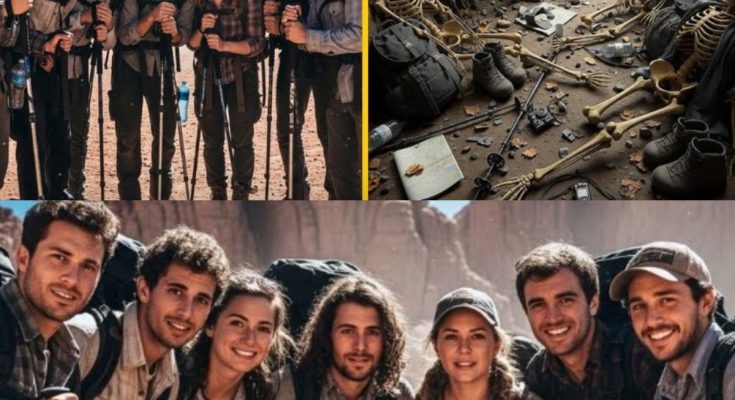The Green Empire and Its Shadows
In the vast and enigmatic heart of Chiapas, the Lacandon Jungle rises like a green empire where time and stories intertwine beneath the canopy of colossal ceiba trees. These giants, sacred to the ancient Maya, have stood as silent witnesses to rituals, migrations, and mysteries that seem to vanish from memory only to reappear decades later.

It was in this untamed wilderness that, in 1984, the strange and haunting story of Rogelio Méndez began — a mystery that has recently returned to shake Mexico after a chance discovery.
1984: Seven Young Adventurers
The story starts with seven young explorers who, lured by the call of the unknown, ventured into the depths of the Lacandon. At that time, the trails were little more than invisible threads in an uncharted labyrinth. Humidity clung to their skin, every step swallowed by the thick undergrowth, every sound amplified by the jungle’s echo.
Among them was Rogelio Méndez, a 22-year-old archaeology student. Rogelio carried a small notebook in which he sketched theories about forgotten civilizations, hidden tombs, and ancient trade routes he believed lay buried beneath the ceiba roots.
For days, the group fought through storms, venomous snakes, rivers swollen by sudden rain, and the constant fear of jaguars stalking unseen. And then, one night in the middle of a thunderstorm, Rogelio vanished.
A Disappearance That Haunted Chiapas
The accounts from the survivors were fragmented, contradictory. Some claimed Rogelio wandered off to sketch carvings on a mossy stone wall; others swore he went in search of water and never returned. His notebook, damp and torn, was found days later near the banks of the Usumacinta River — its last pages scribbled with half-legible phrases: “stairs beneath the roots… stone eyes watching…”

Authorities launched a search, but after weeks of combing through swamps and caves, the effort was abandoned. Rogelio was declared missing. His family mourned without answers, while rumors spread through Chiapas: was it an accident, an animal attack, or had he stumbled upon something no one was meant to see?
The case faded into silence, like so many others swallowed by the jungle. Until now.
A Fortuitous Discovery
Nearly four decades later, a forest ranger patrolling near Punta Diamante, at the edge of the Lacandon, uncovered what appeared to be fragments of ancient pottery and a rusted flashlight lodged between rocks. Nearby, half-buried under a ceiba’s roots, lay a metallic object: a buckle engraved with initials — R.M.
The discovery revived the case of Rogelio Méndez. Media outlets swarmed the region, and archaeologists rushed to analyze the site. What seemed like a simple coincidence suddenly breathed new life into a mystery long thought forgotten.
Theories Reborn
Experts and locals alike offered competing theories:
-
Archaeological secret: Rogelio may have stumbled upon a hidden chamber or Mayan structure that powerful groups wanted concealed.
-
Criminal element: Some whisper that illegal traffickers operating in Chiapas at the time might have encountered the young man and silenced him.
-
The jungle itself: Others insist the Lacandon is merciless — that Rogelio simply became another life lost to its storms, rivers, and predators.
But the discovery of personal artifacts decades later raises troubling questions: if the jungle consumed him, why were his belongings found in relatively intact condition?
Family and Legacy
For Rogelio’s surviving relatives, the news reopened old wounds. His younger sister, now in her sixties, spoke to local reporters:
“We never stopped hoping. Rogelio loved the jungle. If he died there, at least now we might learn how. But part of me still wonders — did he really die that night?”
His old notebook, preserved in the archives of his university, has become a symbol of obsession and mystery. Scholars revisit his last sketches, analyzing every mark for hidden meaning.
The Lacandon’s Unforgiving Mystique
The Lacandon Jungle has long been described as “a world within a world.” Stretching over 1.5 million hectares, it remains one of Mexico’s most biodiverse regions — and one of its most treacherous. Its dense vegetation can conceal entire temples, its rivers can sweep away the strongest swimmers, and its sudden storms can trap even seasoned explorers.
It is also a place where legends blur with reality. Local Lacandon Maya elders often warn outsiders: “The forest keeps its secrets. It only gives them back when it chooses.”
Perhaps Rogelio became one of those secrets — returned to us decades later by chance, or by the jungle’s own will.
Conclusion: A Case Without Closure
The discovery of Rogelio Méndez’s belongings does not solve his disappearance, but it does remind Mexico that the Lacandon remains both a cradle of heritage and a keeper of mysteries.
Was Rogelio a victim of the wilderness? Or did he stumble into something darker — something deliberately hidden beneath vines and roots?
The only certainty is that his story is not over. As investigators prepare new expeditions into the Lacandon, journalists and adventurers alike wait for the next revelation. For in the depths of that jungle, where ceibas pierce the sky and shadows move like whispers, secrets never die. They wait.



